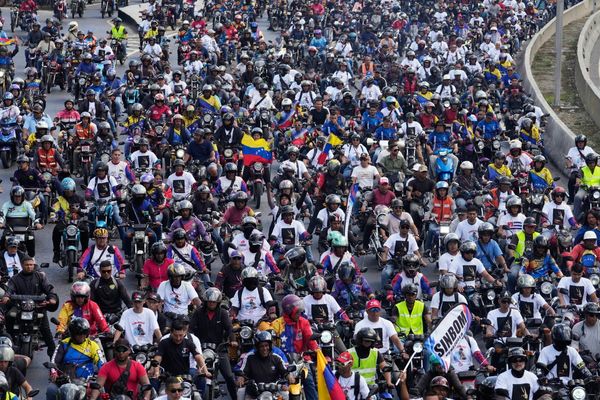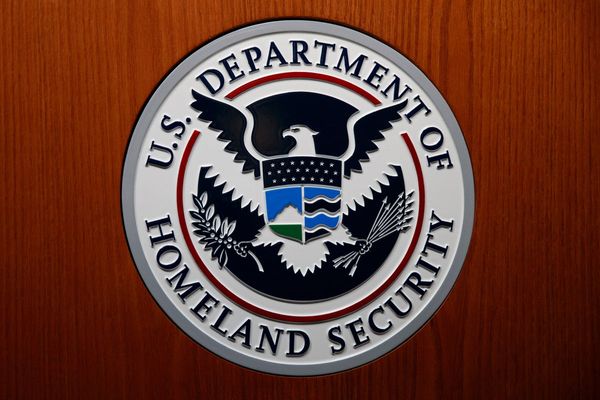
New figures showing net migration to the UK last year increased to a record level of more than 600,000 have been seized on as the latest example of broken Tory pledges in an area where PMs come under relentless rightwing pressure.
David Cameron, May 2010
Heading into the 2010 general election, the opposition leader promised “to limit net immigration to ‘tens of thousands’ per year” rather than the hundreds of thousands. He told the BBC:
I don’t think that’s unrealistic; that’s the sort of figure there was in the 1990s and I think we should see that again.
This was a tall order given that Cameron was also committed to staying in the EU and as the referendum approached he was obliged to seek an “emergency brake” on free movement from Brussels.
David Cameron, April 2011 and April 2015
A year after winning office, Cameron emphasised the “tens of thousands” pledge, promising to achieve it by the next election. In a 2011 speech, he said:
… with us, our borders will be under control and immigration will be at levels our country can manage. No ifs. No buts. That’s a promise we made to the British people. And it’s a promise we are keeping.
Nevertheless, the number was up to 379,000 by the time voters went to the polls. In April 2015, the next Tory manifesto repeated the previous pledge:
Our action has not been enough to cut annual net migration to the tens of thousands. That ambition remains the right one.
Campaigning for ‘Brexit’ before the June 2016 referendum
Promises by pro-Leave Tory MPs and ministers that the UK would be able to “take back control” of a range of powers including immigration played a crucial role in the 2016 referendum.
On the campaign trail, Boris Johnson said:
At the moment we are stuck in the EU so it [the immigration policy] is not possible, but post-23 June that option will be on the table. What we want to do is take back control over immigration and have more fairness over the way it is done.
Theresa May, July 2016–July 2019
After becoming prime minister, the new Tory leader’s main task was to negotiate Britain’s withdrawal from the EU. May quickly made it clear she did not want Britain to remain in the single market, which meant freedom of movement, going on to pledge in her general election manifesto:
We do want to bring net migration down to sustainable levels. We believe that is the tens of thousands.
Boris Johnson, July 2019 – September 2022
Having ousted May with a promise to “get Brexit done”, Johnson was no more keen than May to restore free movement.
While dispensing with promises to bring net migration into the tens of thousands, he pivoted to a new pledge for overall numbers to fall from a level of about 245,000. The 2019 manifesto promised:
There will be fewer lower-skilled migrants and overall numbers will come down. And we will ensure that the British people are always in control.
It was also with Johnson, however, that the rhetorical focus began to shift from overall migration to “cracking down” on irregular migration.
Liz Truss, September 2022 – October 2022
Although her time in office was short, Truss still found time to fall foul of Tory immigration infighting. She favoured relaxing immigration rules to help specific sectors.
We will make it easier for farmers and growers to access the workers they need, with a short-term expansion to the seasonal workers scheme, while working with industry to address longer-term skills shortages.
When the then-and-future home secretary, Suella Braverman, was forced to resign, some in Braverman’s camp said the real reason was a dispute on work visas. By their telling, Braverman challenged Truss to honour a manifesto commitment to bring down overall migration.
Rishi Sunak, October 2022
Sunak – himself the child of immigrants – has changed the focus since becoming prime minister drawing a distinction between regular and irregular migration and emphasising the contribution of migrants to public services.
But this message has largely been drowned out by an insistent rhetorical drumbeat on irregular migration, Sunak has stated:
I’m relentlessly focused on stopping the boats, that’s one of my five priorities, and we’re doing absolutely everything we can to do that.
Those comments were made in an interview this month during a trip to in effect set a goal of bringing migration below the level he “inherited”, which was about 500,000 net arrivals a year.
Days earlier, he had already started to back away from the 2019 manifesto promise to reduce it below the level then of about 220,000.
A question of focus
Immigration is, of course, complex, and the Conservative prime ministers have usually acknowledged that it can be good for the UK, as people come to study or to work in sectors where skilled labour is in short supply. But over the 13 years, the focus has shifted gradually from Cameron’s pledge to bring down overall immigration to Sunak’s terse commitment to “stop the boats”.
This is striking because although small boat arrivals have increased rapidly over the past couple of years, the numbers are still small in comparison to regular immigration, and by no means the only source of irregular migration.
One final question is whether the Tories are leading or following opinion with this change in emphasis. Analysis this week by the UK in a Changing Europe thinktank suggested that more people in the UK now think of immigration as a positive force than a negative one, but that Conservative voters particularly think the government should take small boat crossings seriously.
Methodology and sources
Net migration data comes from the Office for National Statistics. Comparisons throughout the whole period 2009 to 2022 should be taken with care as there were changes in their methodology in June 2010 and in June 2020. Data from 2018 onwards has been revised using the last methodology.
Data on small boats, recorded detentions and inadequately documented air arrivals comes from the Home Office. These numbers are not equal to the size of irregular migration for several reasons: some migrants may become regular after arriving without authorisation (eg when they apply for asylum), people who arrived undetected are not counted, and some of those who enter regularly may have become “irregular” later, for instance, overstaying a visa.
People who become regular after arriving via unauthorised routes will be included in the ONS immigration figures.
Small boats figures do not include any person who arrived on larger vessels (eg ferries) or those intercepted by French authorities and returned to France. Recorded detentions are not the same as people, as the same person can be detected multiple times.







